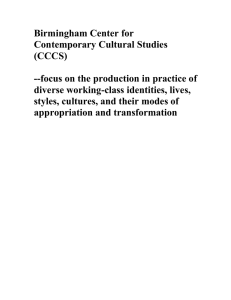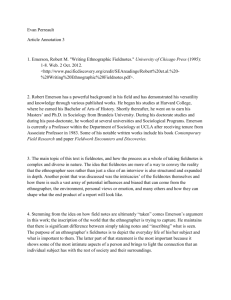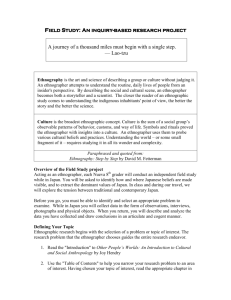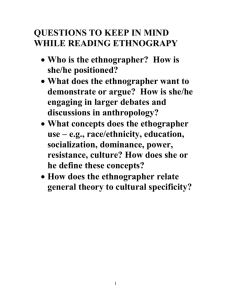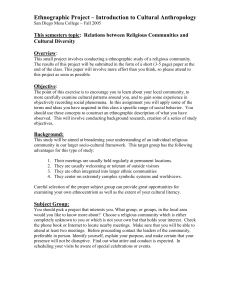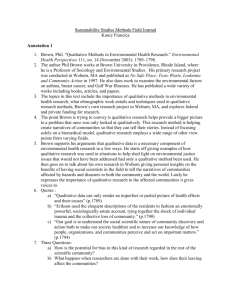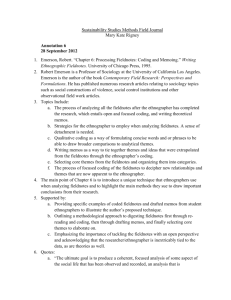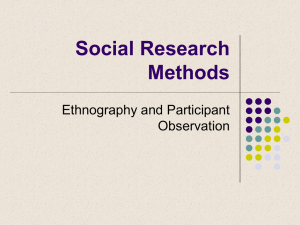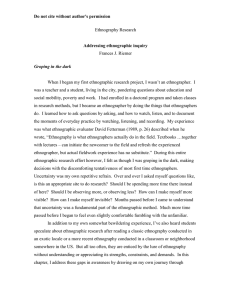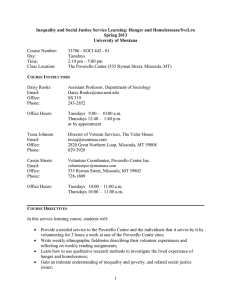Sustainability Studies Methods Field Journal Mary Kate Rigney
advertisement
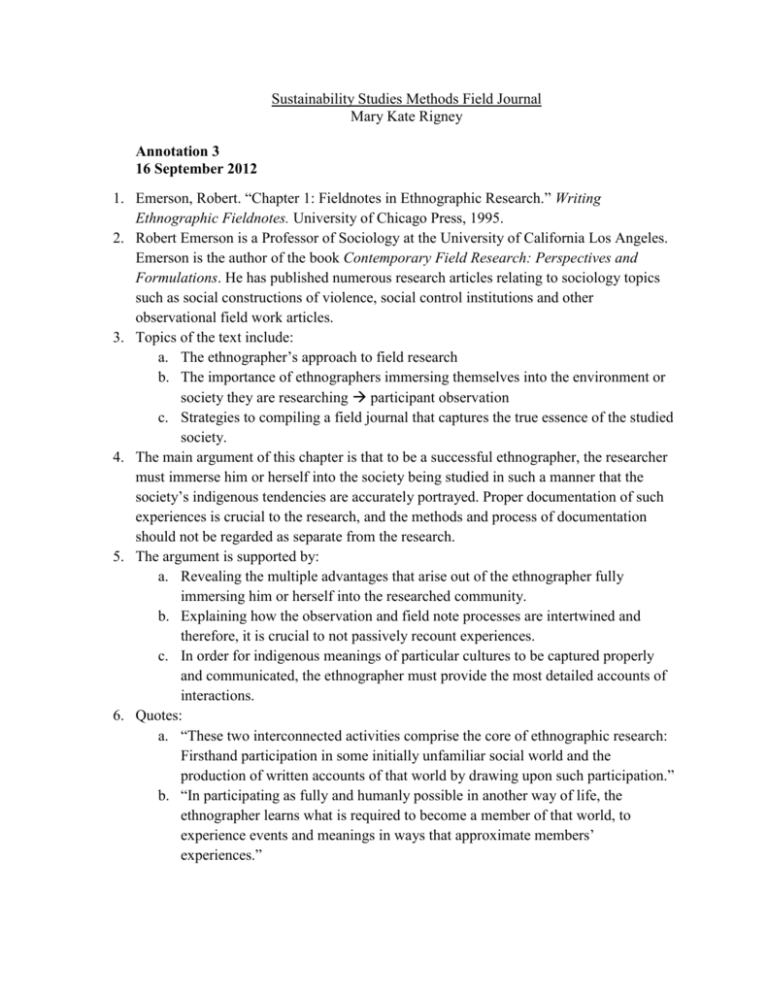
Sustainability Studies Methods Field Journal Mary Kate Rigney Annotation 3 16 September 2012 1. Emerson, Robert. “Chapter 1: Fieldnotes in Ethnographic Research.” Writing Ethnographic Fieldnotes. University of Chicago Press, 1995. 2. Robert Emerson is a Professor of Sociology at the University of California Los Angeles. Emerson is the author of the book Contemporary Field Research: Perspectives and Formulations. He has published numerous research articles relating to sociology topics such as social constructions of violence, social control institutions and other observational field work articles. 3. Topics of the text include: a. The ethnographer’s approach to field research b. The importance of ethnographers immersing themselves into the environment or society they are researching participant observation c. Strategies to compiling a field journal that captures the true essence of the studied society. 4. The main argument of this chapter is that to be a successful ethnographer, the researcher must immerse him or herself into the society being studied in such a manner that the society’s indigenous tendencies are accurately portrayed. Proper documentation of such experiences is crucial to the research, and the methods and process of documentation should not be regarded as separate from the research. 5. The argument is supported by: a. Revealing the multiple advantages that arise out of the ethnographer fully immersing him or herself into the researched community. b. Explaining how the observation and field note processes are intertwined and therefore, it is crucial to not passively recount experiences. c. In order for indigenous meanings of particular cultures to be captured properly and communicated, the ethnographer must provide the most detailed accounts of interactions. 6. Quotes: a. “These two interconnected activities comprise the core of ethnographic research: Firsthand participation in some initially unfamiliar social world and the production of written accounts of that world by drawing upon such participation.” b. “In participating as fully and humanly possible in another way of life, the ethnographer learns what is required to become a member of that world, to experience events and meanings in ways that approximate members’ experiences.” c. “But more significantly, descriptive Fieldnotes also inevitably present or frame objects in particular ways, “missing” other ways that events might have been presented or framed. And these presentations reflect and incorporate sensitivities, meanings, and understandings the filed researcher has gleaned from having been close to and participated in the described events.” 7. Questions: a. Are there particular values or beliefs that communities possess that cause them to react differently to the presence of ethnographers? If societies being studied react adversely, how do ethnographers immerse themselves when the community isn’t receptive to their presence? b. Is it best to record fieldnotes during the day as the ethnographer observes things or should it be compiled at the end of the day when more serious reflection can occur? c. Should field workers share their observations and journal with the members or community being studied to ensure they didn’t miss anything or portray something inaccurately? 8. Follow up points: a. Look into the different ways of compiling and presenting fieldnotes i.e. multimedia journals, text or visual aids b. Researching past studies that have been performed on the selected community to get better insight into the culture before being immersed. c. Additional ways available to enhance participant observation.
